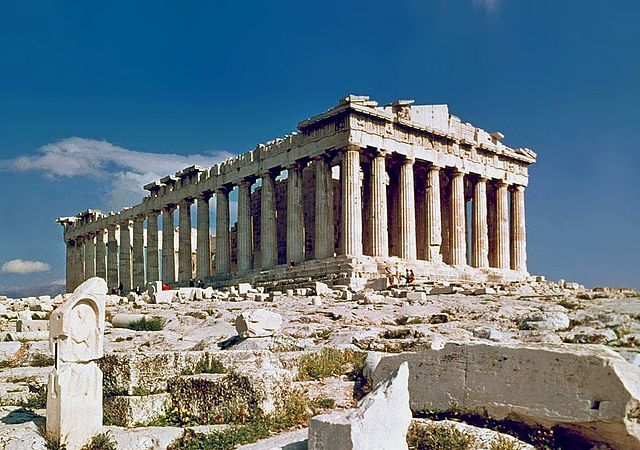Architecture: A Very Short Introduction by Andrew Ballantyne Review and Notes
 Architecture: A Very Short Introduction by Andrew Ballantyne
Architecture: A Very Short Introduction by Andrew Ballantyne
A short Disclaimer
I studied at Newcastle University in the 90’s and Andrew Ballantyne was one of the lecturers there. He never took a project or taught a module I was in but I heard him talk and lecture many times. I remember him well, and would mark him as one of the better teachers I encountered in my education.
A Quick Overview and Introduction
What is Architecture and how can we start to build up a foundation of knowledge with which to understand Architecture better? Architecture: A Very Short Introduction by Andrew Ballantyne answers the first question. The second question requires a framework to be built up in order to apply an order to your understanding and this book will do that too in a clear and unfussy way.
It answers the question what is Architecture in simple and clear language without being simplistic. I mean a simple explanation in the best way, the prose is not flowery and the argument is set out uncomplicatedly and conclusions follow inevitably. That makes it the best explanation I have ever read that’s aimed at the novice.
It goes further on to provide a short framework of styles buildings and historical structure for a new student to begin to sketch out the framework of an integrated understanding of the western architectural tradition. Again it’s worth highlighting, doing this in a simple and clear way in no mean achievement.
After the Introduction there are three chapters;
- Buildings Have Meaning
- Growth of the Western Tradition
- How Buildings Become Great
With a simple and clear Timeline and Glossary at the end this short book of 152 pages will give you a foundation for any History of Architecture course.

The Parthenon Athens (photo Wikpedia by Steve Swayne)
Buildings Have Meaning
Good Buildings are not Architecture.
Architecture is not the buildings themselves but rather a comparison of buildings, their criteria, meaning and of their culture in the context of the building. With the insight of what Architecture means and a fairly robust one you can start to look at it in context. The first set of contexts are within history and technology which are more simple and linear categories. Moreover what a building means depends on the viewer and as society gets more complex and multicultural the meanings of a building increase.
Buildings have a context which is inescapable and that is Architecture.
The original architects might have felt that they were building things that had definite meaning embodied in them, but with the passage of time and the perishing of civilizations, it becomes clear that the meaning is volatile, and dependent not just on the stones, but also on the culture in which the interpretation is made.
The Growth of the Western Tradition
Mostly concerned with Western Architecture and also Anglo-American focussed this chapter sketches a quick journey through that Architectural History roughly up to the modern era. If you are interested in other Architectural traditions they aren’t here but the narrow focus allows this book to be short and clearly focussed.
The prototype after the Renaissance was the Classical style inspired, sometimes copied from the Ancient Romans. A certain version of this style flourished in the Anglo-American tradition, this was Palladianism.
What is this ‘English Palladian’ tradition? Well, it was inspired by Andrea Palladio, a 16th-century Italian architect, who not only designed buildings but also wrote about them. In 1570, he published four finely illustrated ‘books’ on architecture, and included woodcuts of his versions of Roman monuments, which were presented not in their ruined state but conjecturally restored so that they looked how Palladio thought they did when they were new.
The Gothic style is also covered and its context in competition to the Classical style. Was it more or less barbaric, more or less Christian?
How Buildings Become Great
Looking at the modern era in contrast to the ancient one we have an abundance of potential examples of buildings to study, even choosing might be a problem;
If we are trying to write a history of modern architecture then we have exactly the opposite problem. There is too much of it to be able to mention everything, and almost everything in fact has to be left out.
Even the choice of modern building you look at is a value judgement, already you have said what is important.
Buildings and Culture produce Architecture. So it’s natural the as Culture deepens and diversifies then Architecture also diversifies. Modernism develops from a technological step forward and a cultural diversification.
Timeline and Glossary
There is a really nice Timeline of major buildings in the Western tradition and some technological inventions. A good reference list to crosscheck.
Criticisim
Technology is maybe not highlighted enough in the development of Western Architecture here. It is implied and definitely laid out in the Timeline but the ‘Culture’ of Architecture often de emphasises these developments. It’s a technological invention of Brunnelleschis double dome after all that kickstarts the Renaissance. However given the books length and its scope I think its hard to really find fault here for that.
Also it’s fair to highlight its Western Anglo-American centrism but Ballantyne admits to it. This is a reader for someone who wants or will shortly get a History course in Western Architecture after all.
Recommended
This is a great book. I would recommend this to students about to go to Architecture School. This might even be the first book you should read before starting your new subject. Also anyone who wants to get into the subject and would appreciate a gentle and careful guide to hold your hand during your first few steps in the subject then this is the book. For the general reader it might be one to pick up if you are interested in understanding more about Architecture.